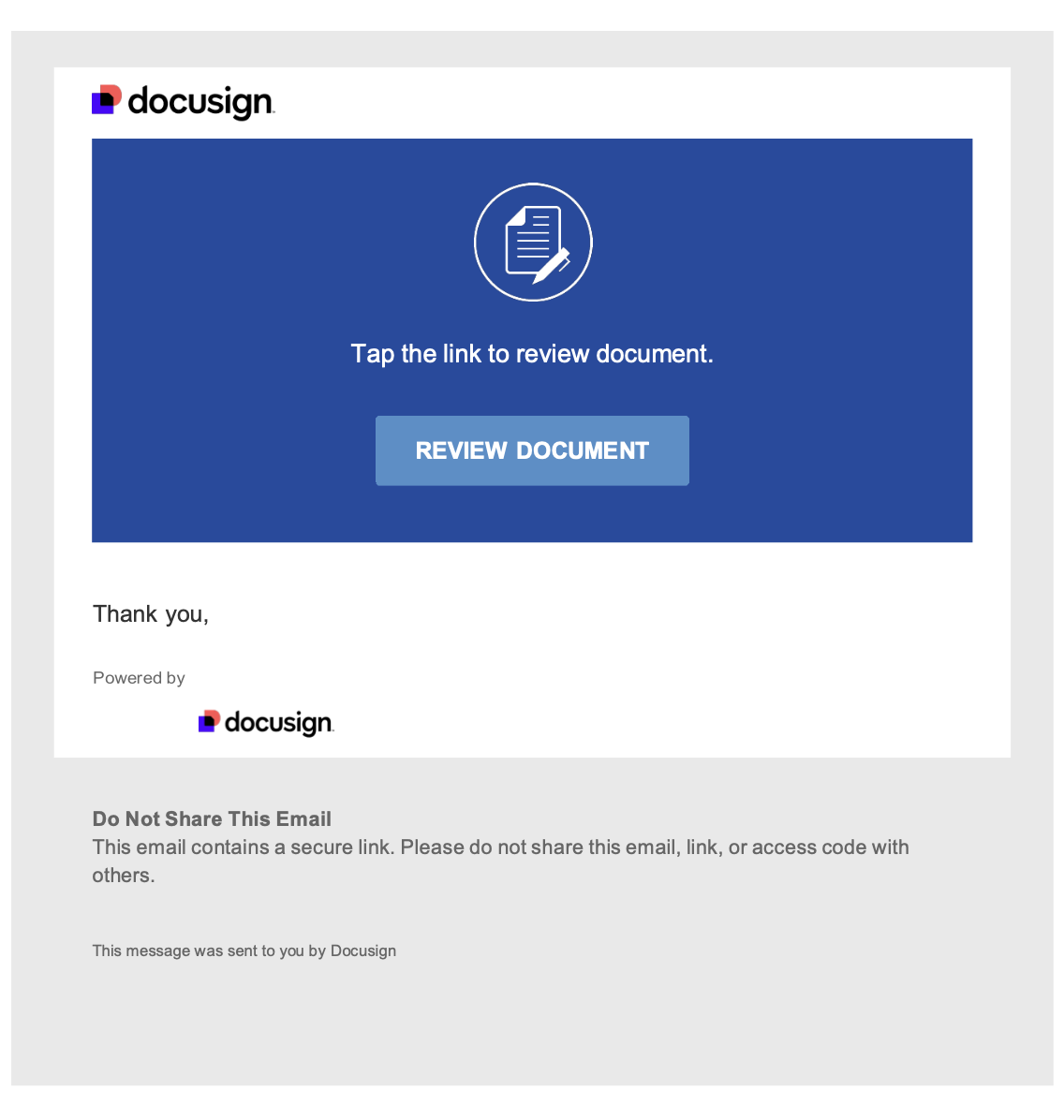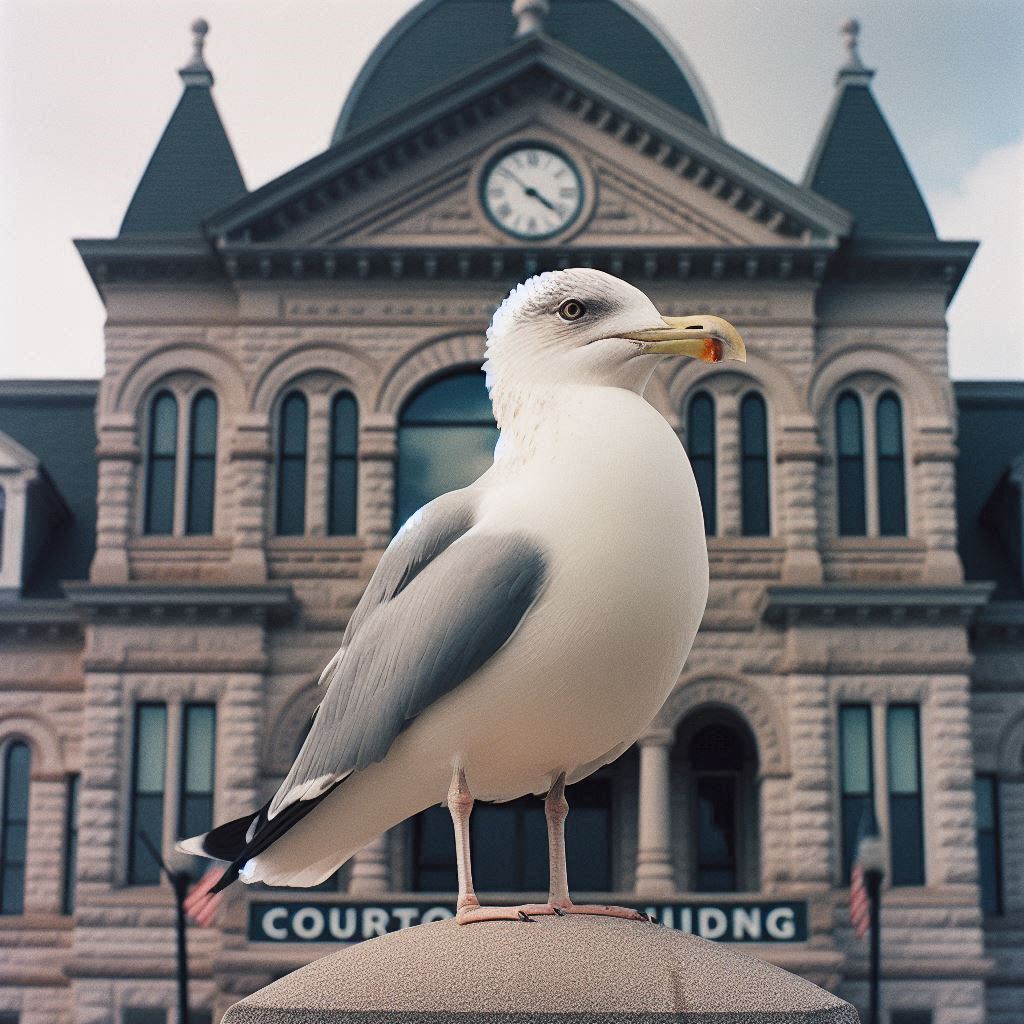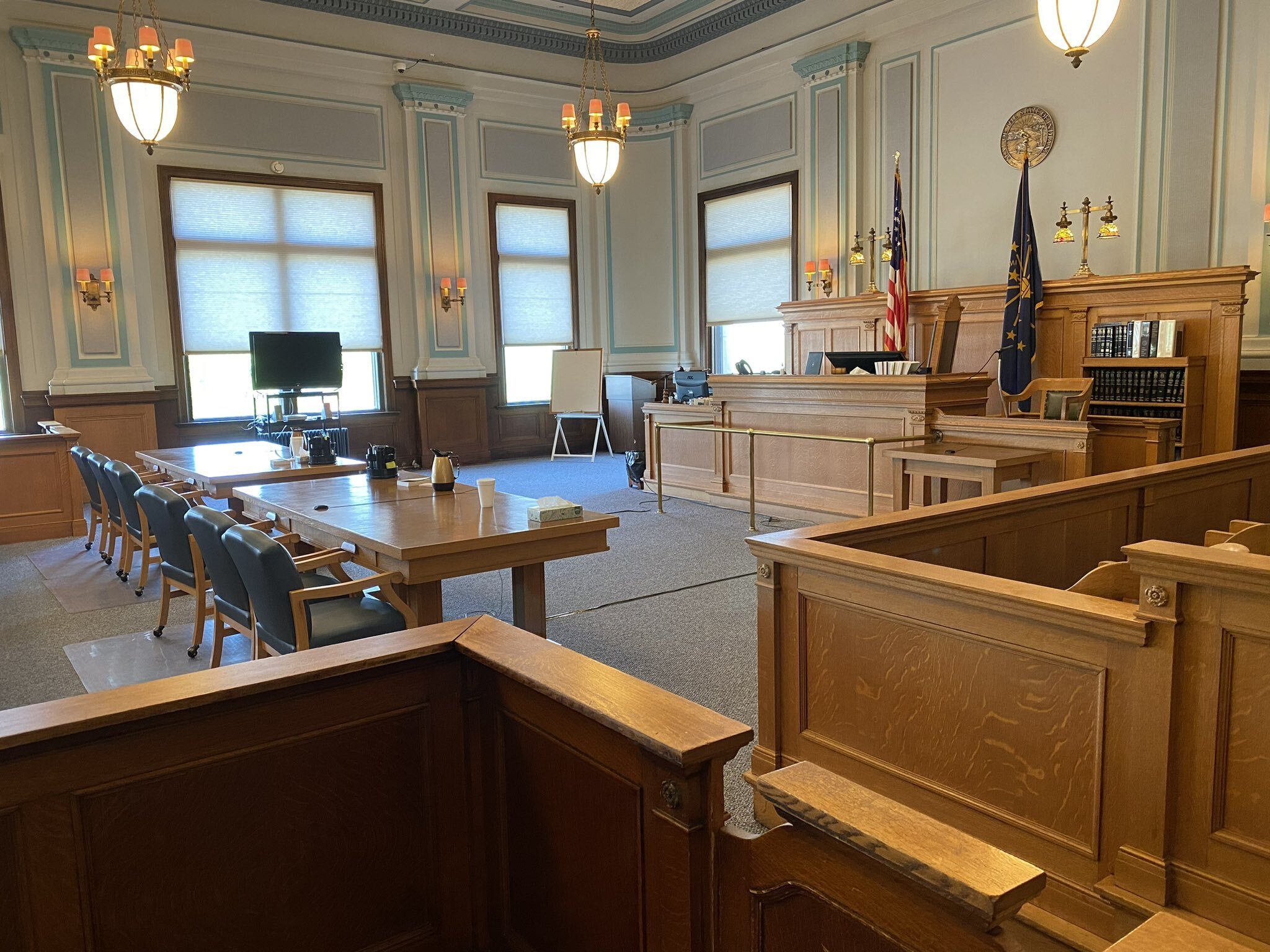
I highly recommend, if you have the time, that you watch Defense Diaries' interview with Richard Allen's defense attorney Andrew Baldwin. It was insightful and - dare I say it - humanizing (they are humans after all). Of course, Baldwin can only say so much publicly without losing his license or having Jerry Holeman turn up at his house, but there are some revelations. In particular I found his comments on Holeman added depth to what we already know about that man's character.
Very interesting that Judge Gull held a sealed hearing to ask Rick Allen if he wanted to plead guilty, of her own volition. I'm amazed that was kept a secret for so long, considering nothing very much Delphi ever does.
If you don't have time to watch the interview, here are some key points from the interview:
- Personal Experiences and Reflections:
- Baldwin describes the emotional toll of the case, stating, "I thought my career was over. I thought Jerry Holeman had won." He also mentions receiving death threats.
- He expresses his belief in Allen’s innocence, saying, "The first time I met him, I just thought this is an innocent guy. I believed that."
- He emphasizes his commitment to the case, stating, "I don’t want any of that [book deals, etc.]. I went back on the case. I want this thing tried."
- He describes his emotional nature, saying, "I’m not a tough guy. I’m a wimp, okay?" but admits, "When I have zero respect for you, it’s easy to be confrontational."
- He mentions his law partners allowed him to work on this case pro bono, saying, "They allowed me to basically go on this journey for the last two years… and that could have bankrupted our firm, possibly, but they didn’t even question it."
- Relationship with Brad Rozzi:
- Baldwin credits Rozzi for convincing him to stay on the case: "Brad was like, are you gonna let them get away with this?.. And then he called me a couple of words that maybe only really good friends can call each other… And then I said, yeah, okay, let’s do it."
- He describes Rozzi’s dedication, saying, "Not for one single second did it even occur to him… 'I want you off the case, Andy…' It was the opposite of that."
- How he got involved in the case:
- He was contacted by Brad Rozzi, who got his name from Stacy Uliana, who had worked on the David Camm case. Baldwin says, "Stacy… said, ‘I’m not gonna get on that case, Brad Rozzi, I’m just not gonna do it.’ He knew that she knew that Judge Gull was on the case, and she just wasn’t gonna get on the case, let’s just say that."
- Criticisms of the Prosecution and Investigation:
- He criticizes the lack of investigation into leaks from the prosecution’s side: "They’re not investigating their own people, you know, and I mean, there’s solid evidence that they were leaking."
- He accuses Jerry Holeman of trying to have him arrested: "Jerry Holeman tried to have me arrested and charged with a crime… He asked the special prosecutor for charges to be filed against me, you know, then I would be arrested. That’s real third-world country Banana Republic type of stuff."
- He expresses frustration with the handling of the “mimicked crime scene” photo: "To this day, the only way that it even exists, this exculpatory piece of evidence, is because we drove down to Georgia and got it."
- He questions the thoroughness of the investigation, particularly regarding the “Odinist” angle: "What’s in there [the 12-page Odin report] is a mindblower. When you add that with this stuff that’s on Facebook, when you add that with the mimicked crime scene, it’s like, okay, what’s going on here?"
Judge Frances Gull
- Alleged Bias and Actions:
- Baldwin questions her decision to send Allen to the Department of Corrections before trial: "The situation with Richard where he had done nothing wrong, he had no hearing, there was no evidence at all that supported this… I’d say zero people other than Richard Allen have ever been sent to prison without a hearing."
- He describes her ignoring him and Rozzi after they re-entered their appearance: "Totally ignored us for the first 10, 15 minutes."
- He criticizes her handling of the gag order and her understanding of defense motions: "The gag, we should have fought the gag order, by the way, early on. That was a mistake, you know, you didn’t expect it to be too broad, and the judge didn’t really understand, I don’t think, the kind of things that we were dealing with, practically speaking."
- The Sealed Hearing:
- Baldwin reveals that Judge Gull held a closed hearing to address allegations that Allen wanted to plead guilty: "My understanding is Judge Gull, it was very nicely handled… Just wanted to know… Rick went in and said what the truth was, which I don’t want to plead guilty, and I never said that I wanted to plead guilty."
Indiana State Police (ISP) and Jerry Holeman
- Allegations of Misconduct:
- Baldwin accuses Holeman of trying to get him removed from the case: "He had a conflict of interest because I had been going after him during this trial, and he wanted me off the case. There’s no question about it."
- He criticizes Holeman’s investigation into the leaked crime scene photos: "Why are you investigating this? It’s a conflict of interest. You have no business investigating this leak."
- He questions Holeman’s truthfulness during his deposition: "Holeman comes back, and I said, what do you think of that [the 12-page Odin report]? You know, you just sat here and told us that this guy had nothing to do with this… And his answer was something like, ‘Well, that’s not on State Police form.’"
- He recounts a confrontation with Holeman in the hallway: "On his way out, I gave him the 12-pager [the Odinism report from Murphy], I said, ‘Hey, that’s for you. I want you to study up on that’… He walks out into the hallway… What I found out from Murphy was… He, Holeman, had walked out with the 12-page Odin report… And he said to Murphy, ‘How the f- did they get this?’"
- Doug Carter’s Press Conference:
- Baldwin states that Doug Carter and Jerry Holeman’s actions at the press conference motivated him to speak out: "When Jerry Holeman got up and said those things that he said… then it was time to get on and talk. Those guys are a large reason why I’m even on this podcast."
Other Key Revelations
- The Franks Memo:
- Baldwin explains that the memo was created in response to the prosecution’s request for a Franks motion: "They wanted their Franks and asked for it, and I gave it to them. Okay? And it would have been wrong for me to file that confidentially."
- He emphasizes that the memo was based on evidence provided in discovery: "Everything was backed up, you guys out there that don’t believe, you think it’s fantasy world, please read it, would you please read it? And then look and see if I’m full of crap or if I’ve backed it up with documentation that they provided us."
- The Leaked Crime Scene Photos:
- Baldwin denies intentionally leaking the photos: "What would I have had to gain by that? I would never ever want that done to anybody. It is so upsetting."
- He describes the impact on his friend Mitch, who was responsible for the leak: "His life is ruined, in a lot of ways, because of it. And I have, just for what it’s worth, I have forgiven him for that."
- Richard Allen’s Mental State:
- Baldwin describes Allen as "confused" and "innocent" when they first met.
- He recounts Allen’s emotional reaction to being hugged: "He said, 'Hey, I want to tell you, I don’t know that you remember this, but the first time I met you, you came over and hugged me, and that meant the world to me.’"
- The “White Van” Evidence:
- Baldwin criticizes the state’s assertion that only the killer could have known about the van, citing multiple public mentions of a white van near the crime scene. "All he had to do [investigator Harshman] was a basic Google search and these 22, 23 things would pop up…that Wala could have seen and gone to Richard and said ‘you know, hey, I think there’s a van there, is that what happened?’"
- The Trial:
- He expresses frustration with not being able to fully impeach witnesses: "It was like, trying to understand Judge Gull’s understanding of how to impeach somebody was impossible for me."
- He describes a "mic drop moment" when he served a subpoena to Brad Weber: "Everybody’s talking about that mic drop moment when you handed him the subpoena. I said, ‘What? They’re talking about that?’ Well, that’s ridiculous."
- He reveals a disagreement with Judge Gull over the admissibility of evidence related to the “covering” and “undoing” of the bodies. "I had to stand up, I remember, and ask, ‘Hey, this case is getting close to being over, I mean, are you ever going to rule on those things?’ And she just said, ‘There’s no nexus,’ and that’s all. But I never, I don’t know that I ever received a formal order".
Further appearances by Rick Allen's defense team are coming up, including Brad Rozzi on Defense Diaries live tonight (9 Jan).




























